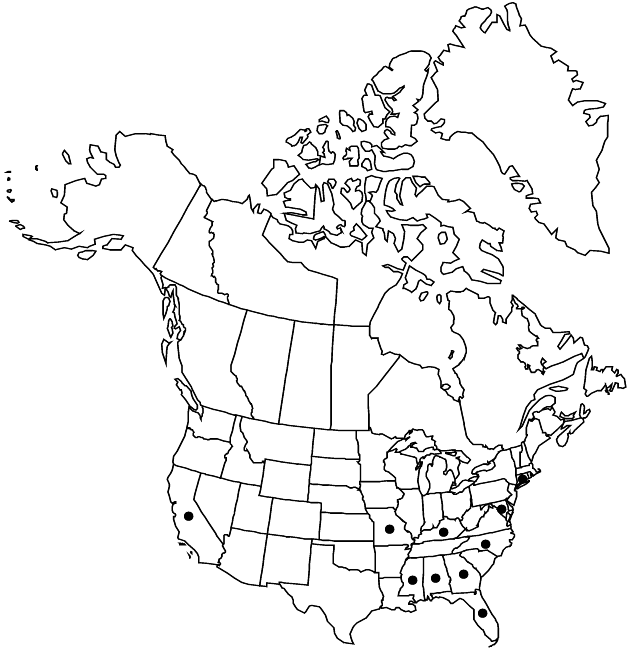Ageratum conyzoides
Sp. Pl. 2: 839. 1753.
Annuals, perennials, or sub-shrubs, 20–150 cm (fibrous-rooted). Stems erect, sparsely to densely villous. Leaf blades ovate to elliptic-oblong, 2–8 × 1–5 cm, margins toothed, abaxial faces sparsely pilose and gland-dotted. Peduncles minutely puberulent and sparsely to densely pilose, eglandular. Involucres 3–3.5 × 4–5 mm. Phyllaries oblong-lanceolate (0.8–1.2 mm wide), glabrous or sparsely pilose (margins often ciliate), eglandular, tips abruptly tapering, subulate, 0.5–1 mm. Corollas usually blue to lavender, sometimes white. Cypselae sparsely strigoso-hispidulous; pappi usually of scales 0.5–1.5(–3) mm, sometimes with tapering setae, rarely 0. 2n = 20, 40.
Phenology: Flowering Jul–Aug.
Habitat: Disturbed sites, mostly coastal
Elevation: 0–20 m
Distribution

Ala., Calif., Conn., Fla., Ga., Ky., Md., Miss., Mo., N.C., South America, introduced, Mexico, West Indies, Central America, Pacific Islands (Hawaii).
Discussion
Ageratum conyzoides is apparently native to South America. North American plants were escapes and naturalized from cultivation.
Selected References
None.